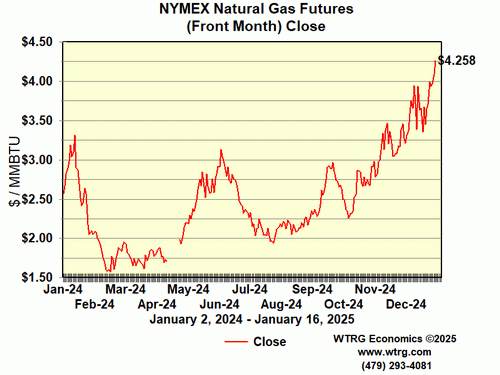To: All
Well....it's out of a California locale:
UCLA researchers create highly transparent solar cells for windows that generate electricity
UCLA Newsroom
UCLA researchers create highly transparent solar cells for windows that generate electricity
By Jennifer Marcus July 20, 2012 Category: Research
UCLA researchers have developed a new transparent solar cell that is an advance toward giving windows in homes and other buildings the ability to generate electricity while still allowing people to see outside. Their study appears in the journal
ACS Nano.
The UCLA team describes a new kind of polymer solar cell (PSC) that produces energy by absorbing mainly infrared light, not visible light, making the cells nearly 70% transparent to the human eye. They made the device from a photoactive plastic that converts infrared light into an electrical current.
"These results open the potential for visibly transparent polymer solar cells as add-on components of portable electronics, smart windows and building-integrated photovoltaics and in other applications," said study leader Yang Yang, a UCLA professor of materials science and engineering, who also is director of the Nano Renewable Energy Center at California NanoSystems Institute (CNSI).
Yang, who is also the holder of the Carol and Lawrence E. Tannas, Jr., Endowed Chair in Engineering, added that there has been intense world-wide interest in so-called polymer solar cells. "Our new PSCs are made from plastic-like materials and are lightweight and flexible," he said. "More importantly, they can be produced in high volume at low cost."
Polymer solar cells have attracted great attention due to their advantages over competing solar cell technologies. Scientists have also been intensely investigating PSCs for their potential in making unique advances for broader applications. Several such applications would be enabled by high-performance visibly transparent photovoltaic (PV) devices, including building-integrated photovoltaics and integrated PV chargers for portable electronics.
Previously, many attempts have been made toward demonstrating visibly transparent or semitransparent PSCs. However, these demonstrations often result in low visible light transparency and/or low device efficiency because suitable polymeric PV materials and efficient transparent conductors were not well deployed in device design and fabrication.
A team of UCLA researchers from the California NanoSystems Institute, the UCLA Henry Samueli School of Engineering and Applied Science and UCLA’s Department of Chemistry and Biochemistry have demonstrated high-performance, solution-processed, visibly transparent polymer solar cells through the incorporation of near-infrared light-sensitive polymer and using silver nanowire composite films as the top transparent electrode. The near-infrared photoactive polymer absorbs more near-infrared light but is less sensitive to visible light, balancing solar cell performance and transparency in the visible wavelength region.
Another breakthrough is the transparent conductor made of a mixture of silver nanowire and titanium dioxide nanoparticles, which was able to replace the opaque metal electrode used in the past. This composite electrode also allows the solar cells to be fabricated economically by solution processing. With this combination, 4% power-conversion efficiency for solution-processed and visibly transparent polymer solar cells has been achieved.
"We are excited by this new invention on transparent solar cells, which applied our recent advances in transparent conducting windows (also
published in ACS Nano) to fabricate these devices," said Paul S.Weiss, CNSI director and Fred Kavli Chair in NanoSystems Sciences.
Study authors also include Weiss; materials science and engineering postdoctoral researcher Rui Zhu; Ph.D. candidates Chun-Chao Chen, Letian Dou, Choong-Heui Chung, Tze-Bin Song and Steve Hawks; Gang Li, who is former vice president of engineering for
Solarmer Energy, Inc., a startup from UCLA; and CNSI postdoctoral researcher Yue Bing Zheng.
The study was supported by the
Henry Samueli School of Engineering and Applied Science, the
Office of Naval Research, and
The Kavli Foundation.
The California NanoSystems Institute is an integrated research facility located at UCLA and UC Santa Barbara. Its mission is to foster interdisciplinary collaborations in nanoscience and nanotechnology; to train a new generation of scientists, educators and technology leaders; to generate partnerships with industry; and to contribute to the economic development and the social well-being of California, the United States and the world. The CNSI was established in 2000 with $100 million from the state of California. The total amount of research funding in nanoscience and nanotechnology awarded to CNSI members has risen to over $900 million. UCLA CNSI members are drawn from UCLA's College of Letters and Science, the David Geffen School of Medicine, the School of Dentistry, the School of Public Health and the Henry Samueli School of Engineering and Applied Science. They are engaged in measuring, modifying and manipulating atoms and molecules — the building blocks of our world. Their work is carried out in an integrated laboratory environment. This dynamic research setting has enhanced understanding of phenomena at the nanoscale and promises to produce important discoveries in health, energy, the environment and information technology.
2 posted on
07/22/2012 1:19:12 PM PDT by
Ernest_at_the_Beach
(The Global Warming Hoax was a Criminal Act....where is Al Gore?)
To: Ernest_at_the_Beach
3 posted on
07/22/2012 1:20:20 PM PDT by
UCANSEE2
(Lame and ill-informed post)
To: Ernest_at_the_Beach
We need to put the brakes on on this solar and wind energy nonsense as it is beginning to have a real impact on the natural gas industry by devastating prices and will put hard working oilfield folks out of work and hurt our oil companies.

To: Ernest_at_the_Beach
It’s ALL in the numbers. If these cells have lousy efficiency and only a few hours a day of sunlight, they still may be the greatest thing since sliced bread, but they’re not going to do too well in the REAL WORLD.
8 posted on
07/22/2012 1:30:03 PM PDT by
BobL
To: Ernest_at_the_Beach; All

Looks like a lot less work/$$$ to install! - and longer 'shelf-life?"
To: Ernest_at_the_Beach
increasing efficiency would be more valuable than increasing transparency
11 posted on
07/22/2012 1:42:05 PM PDT by
bigbob
To: Ernest_at_the_Beach
just like obama’s college records, they are transparent (meaning we can’t see them).
18 posted on
07/22/2012 2:16:21 PM PDT by
isom35
To: Ernest_at_the_Beach

so you can stack them??? that'd be a huge space saver...
24 posted on
07/22/2012 2:53:35 PM PDT by
Chode
(American Hedonist - *DTOM* -ww- NO Pity for the LAZY)
FreeRepublic.com is powered by software copyright 2000-2008 John Robinson



 so you can stack them??? that'd be a huge space saver...
so you can stack them??? that'd be a huge space saver...